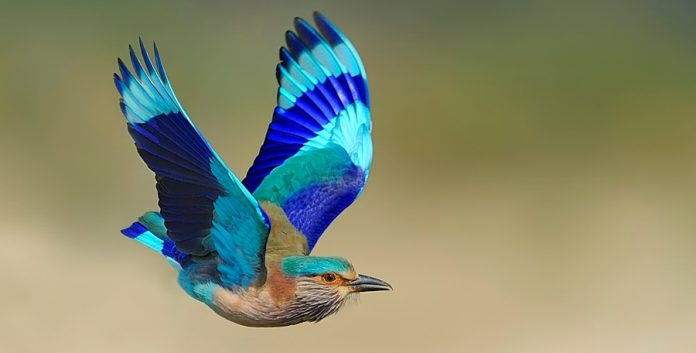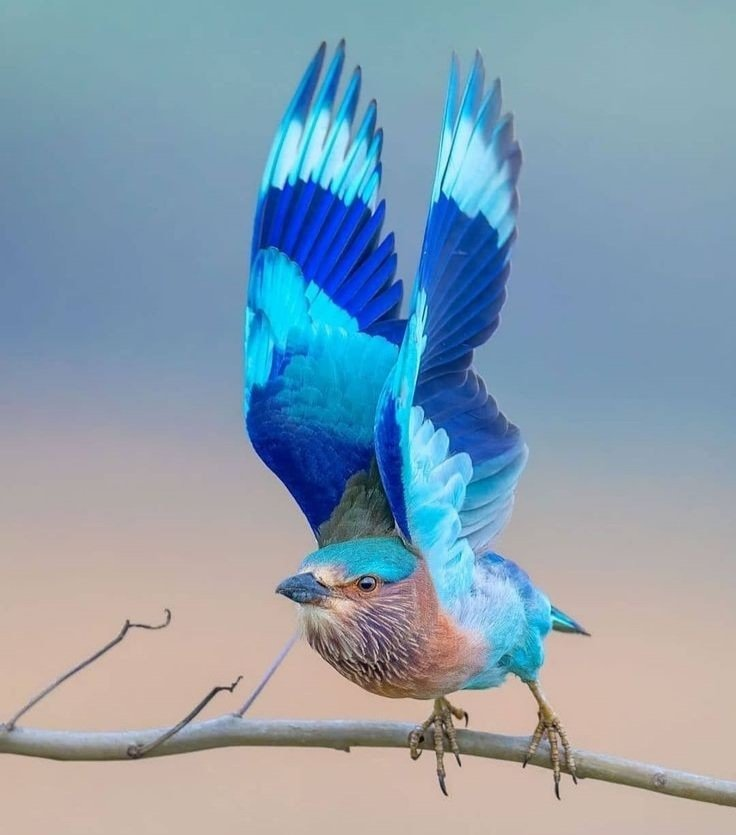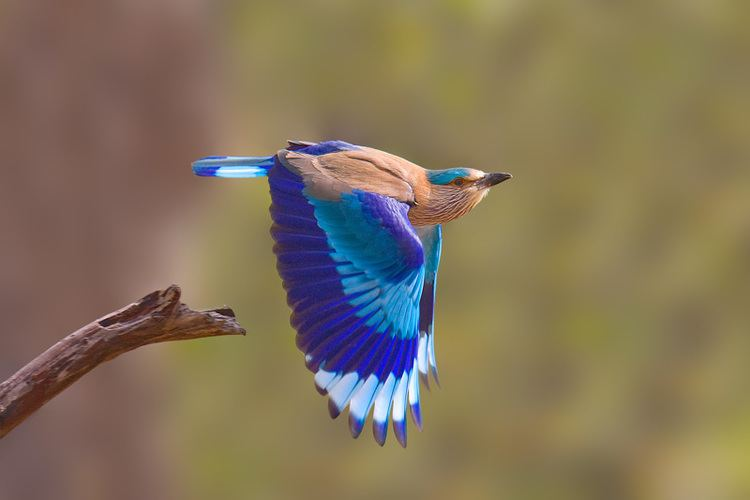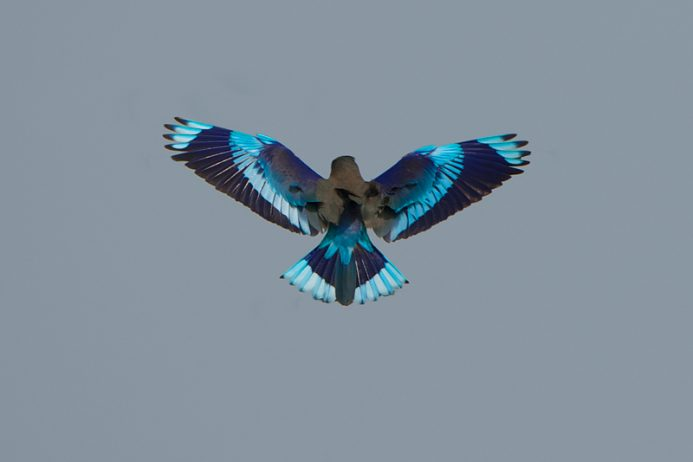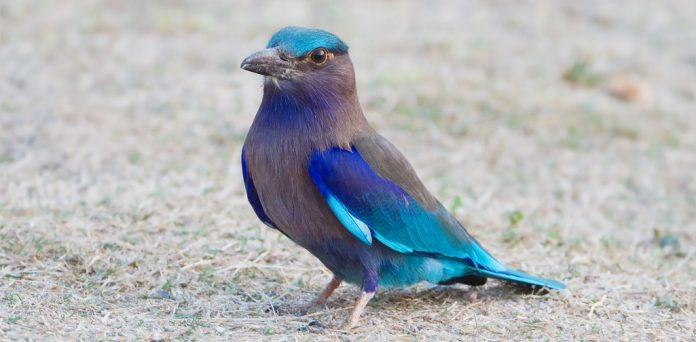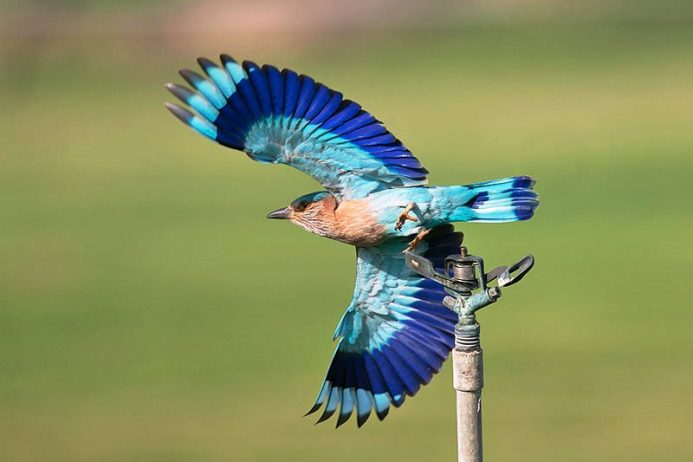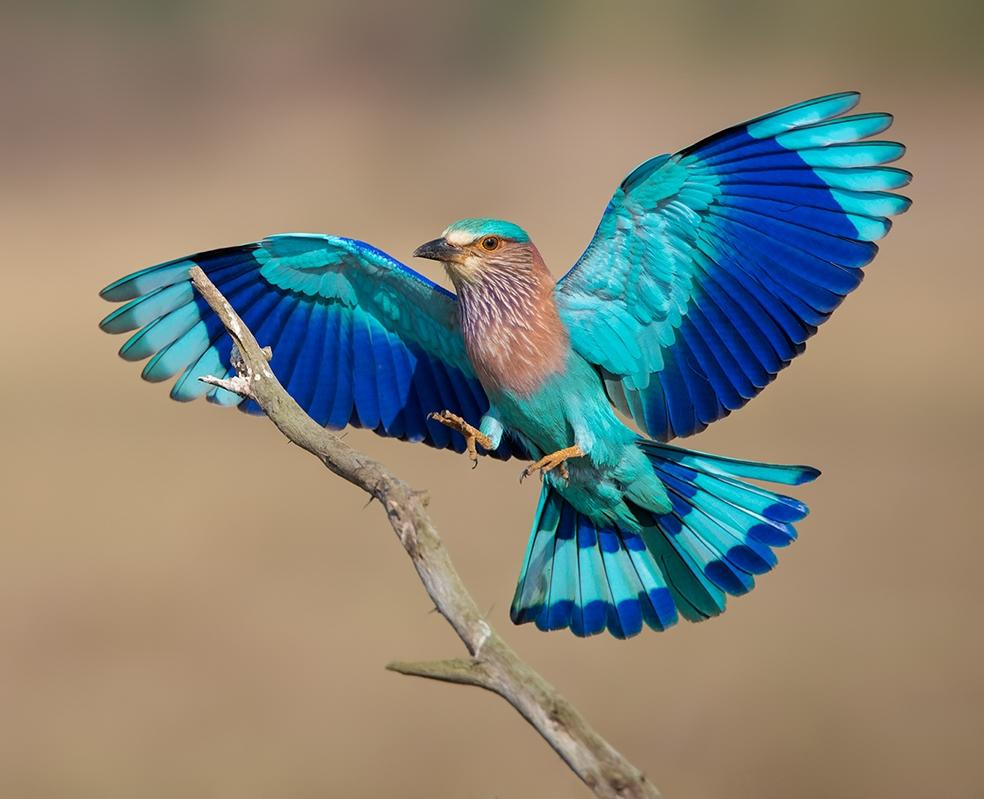Beautiful bird love the colours and the wing span amazing
Known as “paala pitta” in Telugu, the Indian Roller (Coracias benghalensis) is a member of the roller family of birds. It can be found in various parts of Asia and is distinguished by its vibrant plumage and fascinating behaviors. This species has three recognized subspecies, each with its own unique characteristics and distribution patterns.
The nominate form of the Indian Roller is prevalent in West Asia, including Iraq and Arabia, and extends eastward across Pakistan, Sri Lanka, and northern India, specifically north of the Vindhyas mountain ranges. The subspecies “indicus” is mainly found in peninsular India and Sri Lanka, while the race “affinis” occurs in northeastern India and Southeast Asia, including Thailand, Myanmar, and Indo-China. The latter is sometimes considered a distinct species but is known to intergrade with the nominate form within the Indian region.
Differences in appearance distinguish the subspecies of the Indian Roller. The southern bird form showcases a darker reddish collar on the hind neck, which is absent in the nominate form. The “affinis” subspecies is larger and darker, with a purplish-brown face and breast without streaks. It also possesses under-wing covers in a deeper shade of blue. The Indian Roller’s range extends across Asia, including the islands of Lakshadweep and the Maldive Islands in Southeast Asia.
This bird is adaptable to various habitats, including cultivation areas, sparse forests, and grasslands. It is a familiar sight to see them perched on roadside electric wires. Indian Rollers predominantly feed on the ground, descending to capture their prey, which consists of insects, arachnids, small reptiles like Calotes versicolor and snakes, and amphibians. They are particularly attracted to fires and will even follow tractors to catch disturbed invertebrates. In agricultural landscapes in southern India, densities of up to 50 birds per square kilometer have been observed.
Beetles make up approximately 50% of the Indian Roller’s diet, while grasshoppers and crickets account for about 25%. The bird’s feeding behavior and habitat usage are similar to those of the black drongo. During the summer, they may also feed late in the evening, utilizing artificial lights to prey on insects attracted to them. In Hindi, the Indian Roller is known as Neel Kanth, meaning “blue throat.”
The Indian Roller’s affinity for swarms of winged termites is notable, as groups of up to 40 birds have been observed perching on a 70-meter stretch of electric wires. Unfortunately, their habit of feeding near roadsides sometimes leads to collisions with traffic, and a decline in their numbers along roadsides in northern India has been observed.
This species is renowned for its impressive aerial displays, characterized by twists and turns that inspired its English name. The breeding season typically occurs from March to June, starting earlier in southern India. Perched displays during courtship include bill-up displays, bowing, allopreening (preening one another), wing drooping, and tail fanning.
Nesting for Indian Rollers often takes place in holes created by woodpeckers or wood-boring insects in palm trees. They may also tear open rotten tree trunks or utilize cavities in buildings. The nest cavity is usually unlined and consists mainly of debris from the wood. The typical clutch size is 3 to 5 eggs, which are white, broad oval, or nearly spherical in shape. Both males and females take turns incubating the eggs for about 17 to 19 days. The young birds fledge and leave the nest after nearly a month, with around 80% of the eggs successfully hatching and fledging.
The call of the Indian Roller is a harsh crow-like “chack” sound, and it also produces various other vocalizations, including metallic “boink” calls. During bathing, this species demonstrates an interesting behavior of plunge-diving into open water, often resembling fishing. While it may occasionally attempt fishing from water, it is more commonly seen adding its chopped feathers to grass and feeding them to cows, as it was traditionally believed to increase milk yield.
The Indian Roller holds cultural significance in several Indian states, having been chosen as the state bird of Bihar, Andhra Pradesh, Telangana, Karnataka, and Odisha. Its striking appearance and captivating behaviors make it a cherished and celebrated species within the avian kingdom of India.
Hits: 18
